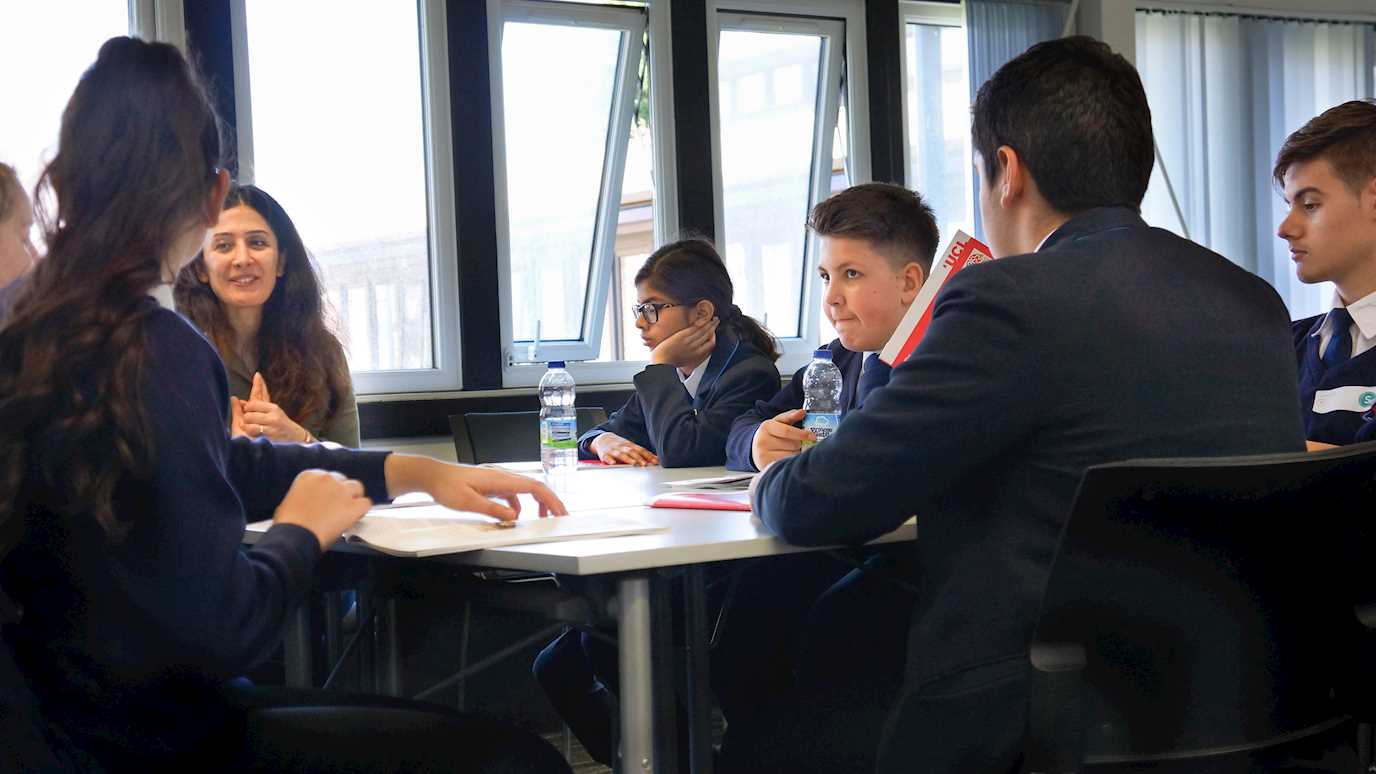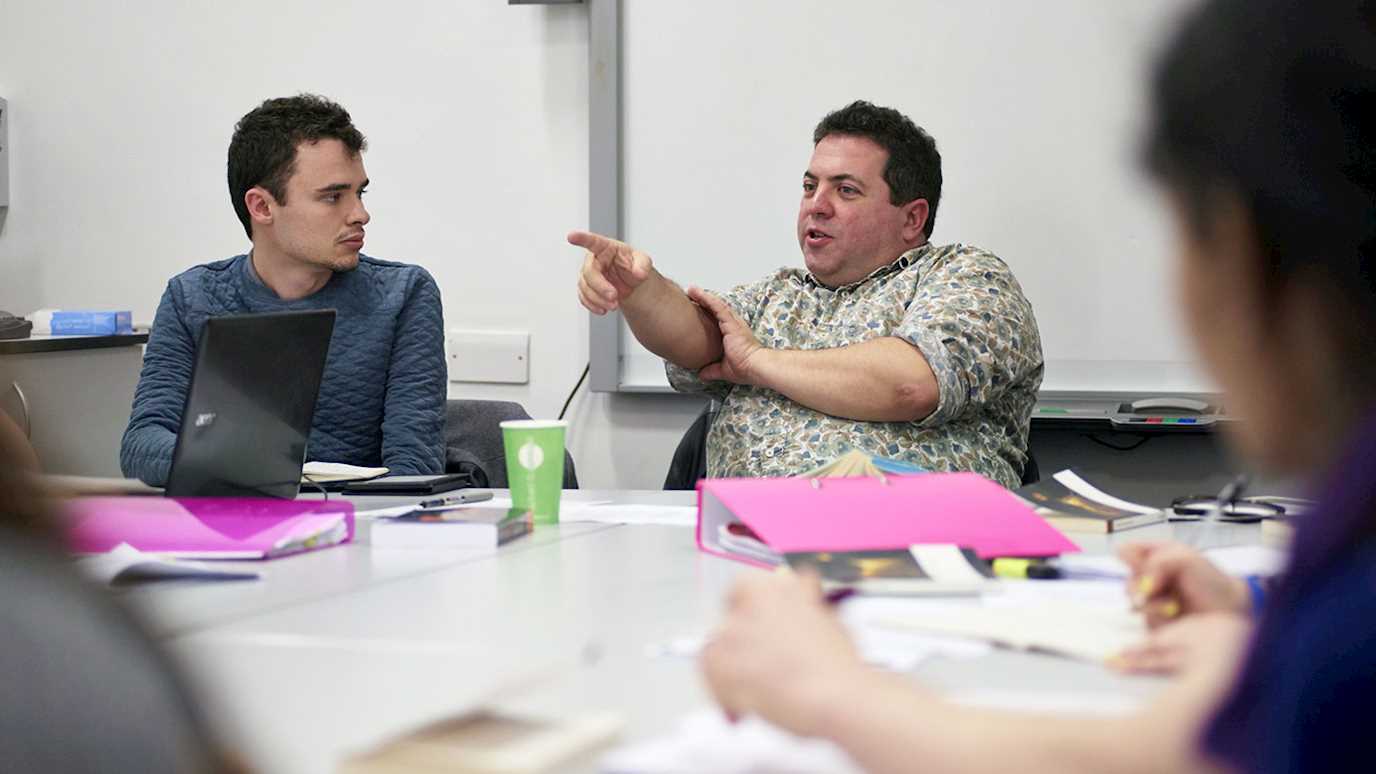Dr James Smith on Songs of Innocence and Experience
Key points
- Blake’s Songs use simplicity rhetorically. This does not mean that they are themselves simple.
- The ‘innocence’ of the voices of children in the poems is not treated straightforwardly nostalgically, as something that threatens to be lost. Rather Blake’s remark that ‘unorganized innocence’ is ‘an impossibility’ suggests that – on the contrary – ‘innocence’ is something much more radical and difficult to achieve, and is something that needs to be strived for.
- ‘Innocence’ in Blake’s songs often takes the form of a kind of illogical, counter-intuitive, or otherwise surprising train of thought or argument: something which ‘short-circuits’ the oppressive logic of ‘experienced’ adult thought.
- It needn’t be the case that Blake is inviting us to approve of the specific statements being made by his various innocent characters: what it seems he does approve of however is the counter-intuitive ‘innocent’ logic by which they reach them.
- This is true of both ‘The Chimney Sweeper’ and ‘The Little Black Boy’. Both of these poems show children who have been undeniably damaged by their world, but who nonetheless have a source of radical innocence in the surprising thought processes they evince in the poems.
Quotation
- Both of the poems discussed appear in ‘Songs of Innocence’. ‘Unorganiz’d Innocence: An Impossibility’ is among the notes written on the manuscript of ‘The Four Zoas’ (1797).
Suggested passages
- Try thinking of Blake’s Songs as a kind of novel, where characters’ or speakers’ positions are neither wholly approved of nor necessarily treated ironically or satirically.
- Consider Blake’s world as one in which human beings are all damaged in some way. In what ways does Blake try to be hopeful about human relationships?
- What could be the meaning of the ‘Unorganiz’d Innocence: An Impossibility’?
Further reading
Digests written by Nathan Jones
Heather Glenn, ‘Poetic “Simplicity”: Blake’s Songs and Eighteenth-Century children’s Verse’ in Vision and Disenchantment: Blake's Songs and Wordsworth's Lyrical Ballads (Cambridge: Cambridge University Press, 1983), pp. 8-33.
This book notes the similarities between the book by Wordsworth and Blake, published ten years apart, as responding to similar currents and counter-currents in contemporaneous society. The chapter here proposes that Blake’s Songs of Innocence and of Experienceused formal similarity to the booming genre of childrens’ poetry books of the day, to explicitly critique and counteract their tendencies to coerce child and adult readers into a simplified, moralistic world view. She characterises Songs as confronting the booming “polite middle class” with the destructive implications of the mainstream views that a) the reader/child is a passive recipient of instructions, and b) that all experience is/should be rationally defined by logic.
By comparing key Songs with contemporaneous and thematically similar texts, Glenn shows how Blake’s Songs would have frustrated readers arriving with expectations informed by such mainstream tendencies. “The Lilly” for example, is shown in the context of the way that early cryptic proverbs were overtly rationalised in books such as Dr J Trussler’s Proverbs Exemplified (1790). In contrast Glenn shows how Blake’s “The Lilly” was edited to make its moral message more ambiguous and indeed indecipherable. Blake does not just emphasise the harmony of these differences between Rose and Lilly, but confronts audiences with the problem of their own tendency to organise them according to moral framework.
Glenn characterises the Songs of Innocence as subverting hierarchies (eg. a child will be guided by adult, sheep led by shepherd) and/by giving voice to ‘the other’ (child, glow worm, the underprivileged); and Songs of Experience as exposing the darker underside of commonly understood ‘virtues’, ironically undermining authoritative voices (“Nurse’s Song”, “Infant Sorrow”) and showing how moralistic viewpoints have no meaning in the face of diversity (“The Lilly”). Particularly important to executing these aims, Glenn suggests is the harmonic quality embedded within many of the poems – exemplified in the call and response trope in such poems as “Infant Joy”, where the poem’s satisfaction is arrived at collaboratively between mother and child.
She ends by identifying strands of thought which Blake “grasped and followed though on”, including those of the French Revolution such as Tom Paine, and Swedenborgian religious mysticism of the time, both of which exhibited a cynicism towards the authority of dominant culture. However, Glenn concludes that Blake’s work was unparalleled in its time, in both its ambition to engage popular audiences (in fact generating its vitality in direct friction with the expectancies of this audience), and the consistency with which it espouses its ideology: “structured not by dominance and control, but by the creative realisation of different needs and desires”.
Saree Makdisi, ‘The Political Aesthetic of Blake’s Images’ in The Cambridge Companion to William Blake, ed. by Morris Eaves (Cambridge: Cambridge University Press, 2003), pp. 110-32.
Rather than be frustrated at the apparent contradictions, allusiveness and instability of Blakes illuminated manuscripts, or attempt to decode them for supposedly hidden messages, Makdisi argues that we should read them as radically indeterminate and “open”. She describes the true text in the illuminated manuscript as “virtual”, existing in the gaps between images and texts, between texts themselves, between different versions of the same text or illustration in each version of the book, and indeed between a given text or image as it is encountered in different cultural or historical contexts. This mandate for reading-across or networked reading is particularly true of the Songs, as poems are often paired across Innocence and Experience collections: Makdisi gives the example of “The Chimney Sweeper” from both collections, which can be read alongside each other, but also shows that “The Chimney Sweeper” of Innocence could be said to complicate (adding a class dimension) to the racial, and apparently racist, blackness in “The Black Boy” which precedes it in this book. By these methods, Blake’s illuminated manuscripts attempt to “rouze” readers to a conscious, open form of reading which frees us from the determinism he equated with “State Trickery”.
Moreover, Makdisi emphasises the fact that Blake’s works emerge from to the processes of engraving, printing, and colouring with writing and drawing. She calls this process by which the manuscripts emerge from the technical processes of copying and literary tactic of inter-textuality, “textual and material reiteration”. Born as engravings, she observes, each iteration of a Blake manuscript, and therefore each instance of an image or phrase within them, is neither original nor copy, rather – like twentieth century jazz musician John Coltrane’s tunes – it must be read as an opening onto a “network of reiterations”. What Blake’s texts mean then, is entangled with how they were made and where and how we encounter them. This ideology, Makdisi argues, constitutes an early, and therefore very important critique of the mechanical modes of industrial reproduction which equated the image with the infinitely reproducible commodity. By embedding heterogeneity and therefore uniqueness, at the level of image, phrase, poem, plate and manuscript alike, Blake repudiated the ideology of intermeasurable units and reproducible commodities he saw in early industrial methods.
Jeremy Tambling, ‘Introduction’, in Blake’s Night Thoughts (London: Palgrave, 2005), pp. 1-16.
The “night thoughts” referred to in the title of this book, refer to a realm of disrupted identity and challenged rationality which Blake invokes in his artwork, often through the imagery of shadows, shade, dreams, and most of all darkness. Tambling to reads subdued metaphoric patterns associated with such night thoughts across Blake’s works: for example connecting Blake’s “The Tyger” in Experience [“what immortal hand or eye dare frame…”] to “the voice of the Devil” in The Marriage of Heaven and Hell and the claim that “Reason is the bound or outward circumference of Energy”. Binaries such as gender are addressed in the context of ambiguities implicit in night thoughts, but still Blake’s plots invariably revolve around male protagonists, while females are doomed to be ephemeral, marginalized, and even vilified.
J.A. Smith, ‘Telling Love: Twelfth Night in Samuel Richardson, Teresia Constantia Phillips, and William Blake’ in Studies in Philology 112:1 (2015), pp. 194-212
This paper examines the way that a single passage from a speech by Viola in Shakespeare’s Twelfth Night is adapted, modified and complicated by eighteenth century authors. Smith notes that this practice of citation and modification of Shakepeare in literature of the time is very common, resulting in a “banalised Shakespeare” of moralistic shorthand. Blake’s contribution, influenced by Phillips via Richardson, is to heighten the ambiguity and heterogeneity embedded in Shakespeare’s imagery in his own poems.
The passage from Shakespeare concerned in this paper is this one:
She never told her love,
But let concealment, like a worm i’th’ bud,
Feed on her damask cheek: she pined in thought,
And with a green and yellow melancholy
She sat like patience on a monument,
Smiling at grief. (2.4.110–15)
Smith notes that the apparently clear assertion in this passage, of the destructive nature of the denial of love, is complicated by the phallic figure of the “worm” and thus implies also rape. Tracing the passage through citations in Richardson and Phillips, and the way these authors mix the citations from Twelfth Night with those from Hamlet – to associate corrupted vegetation with both rape, and virginity.
Smith uses quotations from drafts in Blake’s notebooks to suggest that his adaptationof Viola’s monologue is intended to be radically ambiguous. Smith notes that the compression of “The Sick Rose” in particular, refuses to identify the gender of the sufferer, or indeed whether they suffer from virginity, rape, or by speaking of or withholding love. Along with Richardson’s and Phillips’, Blake’s citations of Shakepeare represent “adaptation at its most testing and exploratory” and directly counter’s the prevalent assumption (in the eighteenth century) that the implications of Shakespeare were settled, self-evident or simple.
Web links
- An introduction to the life and work of William Blake, including contextual materials
- An amazing collection of Blake’s beautiful illuminated texts
- British Library article on the title page of Songs of Innocence
























